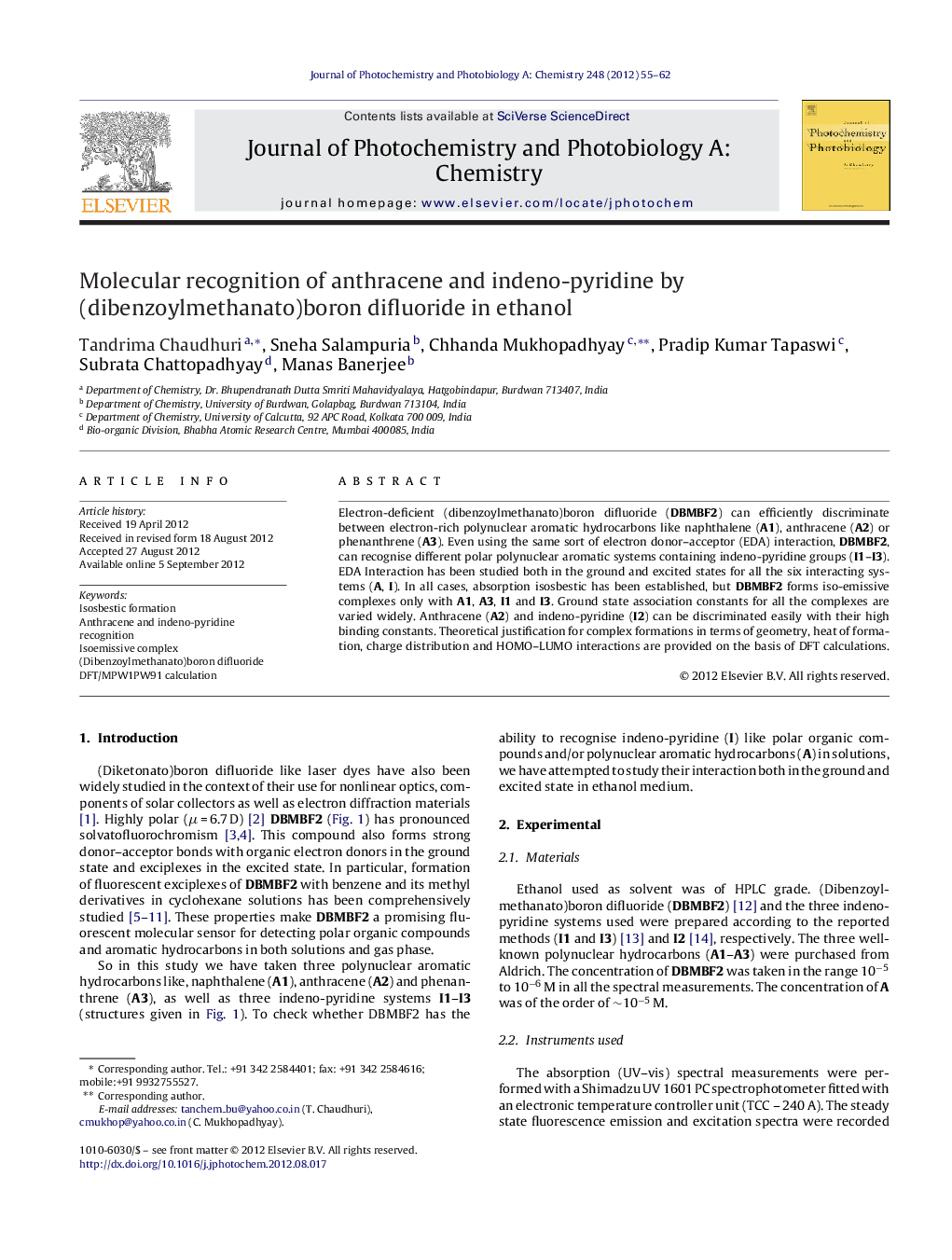| Article ID | Journal | Published Year | Pages | File Type |
|---|---|---|---|---|
| 27985 | Journal of Photochemistry and Photobiology A: Chemistry | 2012 | 8 Pages |
Electron-deficient (dibenzoylmethanato)boron difluoride (DBMBF2) can efficiently discriminate between electron-rich polynuclear aromatic hydrocarbons like naphthalene (A1), anthracene (A2) or phenanthrene (A3). Even using the same sort of electron donor–acceptor (EDA) interaction, DBMBF2, can recognise different polar polynuclear aromatic systems containing indeno-pyridine groups (I1–I3). EDA Interaction has been studied both in the ground and excited states for all the six interacting systems (A, I). In all cases, absorption isosbestic has been established, but DBMBF2 forms iso-emissive complexes only with A1, A3, I1 and I3. Ground state association constants for all the complexes are varied widely. Anthracene (A2) and indeno-pyridine (I2) can be discriminated easily with their high binding constants. Theoretical justification for complex formations in terms of geometry, heat of formation, charge distribution and HOMO–LUMO interactions are provided on the basis of DFT calculations.
► (Dibenzoylmethanato)boron difluoride is good binder of electron-rich poly-aromatic systems in the ground state. ► It forms ground state isosbestic with naphthalene, anthracene and phenanthrene like poly-aromatic hydrocarbons and with three indeno-pyridine systems. ► Their excited states are more loosely bound compared to the ground state. ► No excited state isosbestic are formed with anthracene and/or indeno-pyridine. ► Stabilisations of these complexes are the determining factors for this interaction.
